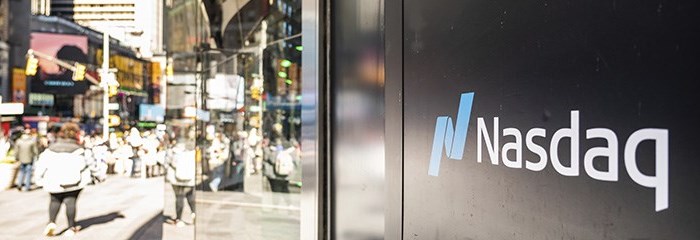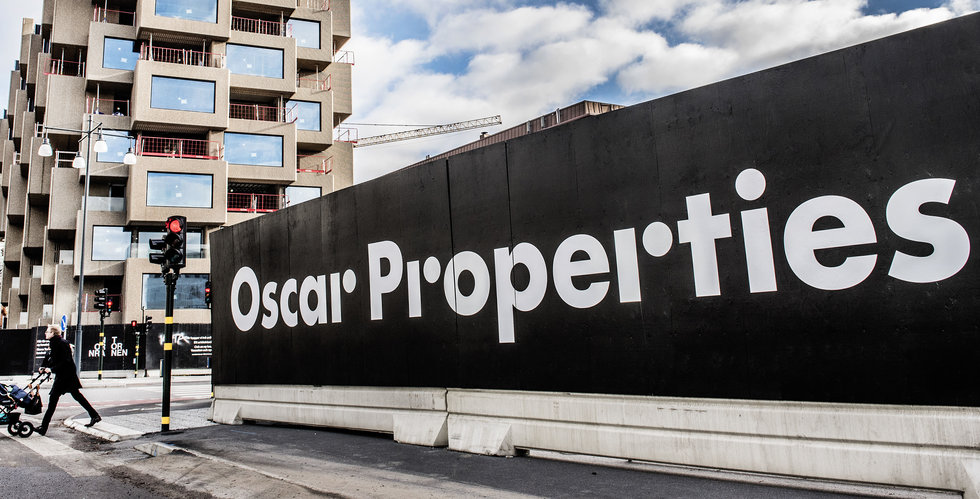
Analyst Note | Oct 01, 2020
We are maintaining our fair value estimate of SEK 162 for Hennes & Mauritz, or H&M, after the firm reported third-quarter figures, although we adjust our 2020 expectations slightly downward. We now expect a 16.8% decline in 2020 revenue from 11.4% in our prior assumptions. Our forecasts imply a 4% decline in revenue in the fourth quarter 2020, versus 5% decline (in the local currency) the firm recorded in September, as 3% of the store base was closed and many operated at reduced hours. We expect sales to recover strongly in 2021 as coronavirus restrictions are eased further and helped by the brand’s improving momentum.
Revenue in the quarter was down 19% or by 16% in local currencies. Online sales continued to boost growth with a 28% increase in the third quarter in local currencies and by 34% in the first nine months. Cost controls were solid in the quarter with the gross margin declining only 190 basis points, with 50 basis points coming from the increased cost of markdowns while selling and administrative expenses declined 16% if the IFRS 16 impact is excluded. Most cost reductions came from variability of expenses and cost-reduction measures, and it benefitted only modestly from government support programs (SEK 400 million in the quarter).
In light of the changing market environment, H&M plans to close net 250 stores in 2021 (about 5% of the store count). This follows the decision of its peer Inditex to close 13%-16% of its store base in 2021 as demand moves online. We have long believed H&M’s store base is bloated, weighing on the profitability of the group and regard the decision to trim stores as positive (albeit even more aggressive closures may be needed). Further initiatives to integrate stock between the stores and online (for example pick-up and return in stores), faster product development, artificial intelligence integration in the product design, planning and merchandizing process should all help improve operations efficiency and profitability.
Business Strategy and Outlook | Oct 01, 2020
Although we still believe that Hennes & Mauritz, or H&M, (the world’s second-largest fashion company in terms of revenue) benefits from scale advantages and brand recognition, we think these are no longer sufficient to guarantee medium- to long-term economic profits in an increasingly competitive environment, hence our no-moat rating for the company. Further, the company's responsive supply chain initiatives seem to no longer be working, as sales faltered and inventory days grew from about 117 in 2015 to 138 days in 2018, while fixed store costs are becoming an increasing drag on profitability as store traffic falls in mature markets.
We believe some of the company’s recent troubles can be addressed by closing underperforming stores; speeding up the supply chain through 3D sampling and radio-frequency ID; introducing artificial intelligence to better detect trends and improve personalisation; and investing in improving the quality/price proposition. However, we don’t think the competitive environment is getting any more benign. While H&M can still gain share from weaker incumbents, we expect it to be harder than it used to be as fitter, more focused competition continues to emerge (low-cost companies such as Primark, discount firms, niche brands, and private-label offerings at Amazon or Alibaba, for example).
We expect the group to grow at 5.3% on average over the next 10 years (at constant exchange rates), with 3.9% growth in the core H&M brand (just marginally ahead of the industry’s low-single-digit increase) and 14% average annual growth for new concepts. We expect gross margins to remain flat, as discounting should abate through gradual product mix improvement, offset by needed increased investments in the quality/price proposition. Further, investments in technology, e-commerce, and operations for newer brands will dampen margin expansion, despite improved H&M store-base costs in the developed markets. We expect operating margins to improve to 2017's 10% level by 2023, after dipping to 7% through 2019-20.
Economic Moat | Oct 01, 2020
We believe H&M benefits from traces of two moat sources: cost advantages and brand intangible assets. However, we lack confidence that these sources are strong and persistent enough to allow the company to generate excess returns over the next decade, which leads us to assign a no moat rating.
We believe H&M’s cost advantage arises from its production scale, which allows it to lower unit costs for carryover items, in combination with a faster supply chain for more fashionable items. While a globally known brand doesn’t ensure pricing power in this industry, it helps firms gain access to real estate at more favourable terms and lower marketing budgets while entering a new market.
Thanks to its size, H&M enjoys some purchasing power with suppliers, illustrated by its roughly EUR 20 billion in revenue in 2017 compared with EUR 12.7 billion-EUR 14 billion at Gap and Fast Retailing. Also, gross margins are at 53% even after the current high level of discounting versus the peer average of 46%. Further, product prices are the same as or lower than most peers, despite higher gross margins, further suggesting higher volumes and better scale. However, a bloated operating cost base, with store densities on the lower end of the peer range, makes operating margins comparable to peers. We think that H&M has room to use its scale advantage in a better way by investing in the quality/price proposition of its products while rationalising store footprint in the developed markets (two thirds of the store portfolio have contract clauses of three years). Nonetheless, it may prove to be a lengthy and challenging task in an increasingly competitive environment against scaled e-commerce retailers or more efficiently run brick-and-mortar retailers such as Zara or Primark.
H&M’s business model balances longer lead times and unit cost reduction for basic carryover items (lead times up to six months) with shorter lead times for high-fashion items, which can be delivered to stores in as little as several weeks. Store assortment is refreshed with new items daily, encouraging repeat customer visits. Despite not having precise figures, we estimate a relatively large part of assortment to be advance orders, given that around 80% is sourced from Asia and slightly less than 70% of sales are generated in Europe (sourcing is regionally matched to an extent). Thus, H&M likely incurs higher fashion risks through advanced inventory planning and ordering compared with peers that have faster and closer supply chains. This is seen in the company’s design mistakes in 2017, which led, among other reasons, to higher stock and discounting levels.
Most shipments from factories go directly to market-based logistic centers that support stores. The stores themselves do not have backup stocks but are replenished as required from these centers. We think this model enables inventory levels to be determined on a pull instead of a push system and removes some of the gross margin risk associated with promotional activity to clear excess merchandise.
The company can leverage its purchasing cost scale for the smaller brands in the group, which currently account for 10% of the group’s revenue and target different customer niches.
We believe that H&M can continue growing by taking some share from weaker midprice brands, department stores, and nonspecialised companies (which still account for around 50% of the U.S. market, according to Thredup Report, down from 66% 10 years ago). Nonetheless, we expect gains to be more difficult than they used to be, as fitter, focused competition continues to emerge (low-cost companies such as Primark, discount firms, and niche and private-label brands made available to wider audiences on platforms such as Amazon or Alibaba, for example).
Despite H&M brands’ high global recognition (it is number 23 by brand strength, according to the Interbrand ranking in 2017, down from number 21 in 2010), we don’t see brands yielding significant pricing power in the low-cost apparel industry, in contrast to luxury goods, where brand choice helps communicate the financial status of the wearer and sometimes provides storage of value.
Our view is supported by a few cases of market share losses and margin erosion for companies with strong globally or locally known brands, with recent examples including Gap, Abercrombie & Fitch, and Esprit, as well as general industry price deflation. Case in point, global apparel industry expanded by around 3% in terms of volumes but only 1% in terms of value annually over the past five years, according to Euromonitor, and apparel prices have been largely flat in the U.S. since the 1990s, running well below CPI inflation. Consumers are also becoming less brand-loyal and more price-sensitive, some studies show. For example, two thirds of millennials say they are willing to switch brands for a discount of 30% or more, according to McKinsey’s 2018 State of Fashion Report.
We do think that a recognised brand helps penetrate new regional markets with lower marketing costs (H&M’s marketing budget is around 3%-3.5% of revenue, lower than 4% for Gap and Fast Retailing, despite continuous new brand launches). Brand recognition also helps get better access to real estate at more favourable terms, which smaller and less-known peers may lack. Although the quality of real estate is somewhat lower for H&M brand than for peer Inditex’s Zara--given that H&M has more nonprime locations in the mix, store count is twice as big, and rental expense per square meter is around half that of Inditex--it is still present on the main shopping streets, which helps maintain the brand cachet.
Fair Value and Profit Drivers | Oct 01, 2020
We are keeping our fair value estimate of SEK 162 unchanged for Hennes & Mauritz after incorporating the COVID-19 impact on 2020 results. We expect a 16.8% annual decline in revenue with revenues in the fourth quarter down by 4%.
Our long-term expectations for the group are unchanged, as we assume 5% average revenue growth over the next 10 years. We are encouraged by the recent sales acceleration to 6% at constant currencies in 2019 (versus 3% in 2018 and 2017), with only 2% growth in store count, as well as stabilization in gross margin and improvement in inventory days from 138 to 125 in 2019. We are also encouraged by increasing closures of unproductive stores, which should help margins (the company plans to close 250 stores in 2021).
Investments in faster product development through 3D sampling, AI for more effective merchandising and trend detection, RFID for faster product handling and better inventory oversight, in addition to investing in the quality/price proposition and some store closures, should help stabilise comparable sales. Nonetheless, we don't expect the H&M brand to return to prior high-single-digit revenue growth, given its maturity and intensifying competitive environment.
We expect newer brands to grow faster, with upside from both geographical expansion and online sales development. We believe that smaller brands benefiting from H&M’s scale can gain share by offering a better quality/price proposition in a higher price bucket compared with the core H&M brand.
Although we expect current inventory overhang and discounting to abate in the coming years, we don’t forecast gross margin recovery in an increasingly competitive market and given foreseeable quality/price investments. Operating margins would remain under pressure in the near term due to the COVID-19 outbreak and investment programs but should recover to 2017 levels over time. We forecast capital expenditures in the 5% range (down from 6% over the past five years) as retail expansion slows. They should be channeled to store refurbishments, retail infrastructure development for smaller brands, and technology.
Risk and Uncertainty | Oct 01, 2020
We assign a high uncertainty rating to H&M shares. Correctly predicting fashions will always be a risk, and performance could suffer if designs or quantities do not match demand, as is the case currently. Brand strength could also suffer if fashion or quality misses were to become a pattern. Competition in the apparel space is always a viable risk. Many competitors are trying to implement the fast-fashion model in their businesses including Gap, making it more likely that other brands may be more competitive on price, which may hurt market share. Additionally, growth in online fashion platforms such as Amazon, Zalando, Asos, and JD.com provides broad consumer access to smaller, niche brands that can, as a group, take share from bigger companies over time.
Finally, consumer preference for more experiential things like travel may hurt discretionary spending. Margins may be hurt as the company invests in this growth, is subject to discounting pressure, or if mix shifts toward lower-margin products or brands. Broader economic factors also remain a risk for the company. Consumer confidence, high levels of student debt, global macroeconomic headwinds, and low wage growth make us concerned that consumers may pull back spending across the board, although this might also drive increased demand for low-priced products such as H&M's.
Stewardship | Jun 26, 2020
We maintain our Standard stewardship rating. Karl-Johan Persson has been managing director and CEO since July 2009. Previously, he had held operational roles within H&M since 2005, including working as head of expansion, business development, brand, and new business. Between 2001 and 2004, Persson was CEO of European Network.
The board consists of seven members, two employee representatives, and two deputy employee representatives. Six of the board members are independent. Stefan Persson serves as chairman of the board; he was managing director and CEO from 1982 to 1998. Stefan Persson and family own 46.5% of total shares and 74% of voting shares, increasing their stake recently. As such a large shareholder, the family interests should be well aligned with those of the shareholders. However, given the voting rights structure, minority shareholders don’t have a lot of influence over the strategic direction of the firm.
We believe management can be credited for building an international presence over the past few years (China and U.S. accounted for the bulk of new store additions over the past five years). We also consider brand portfolio broadening as a smart move, as it gives the company an opportunity to expand its addressable market and leverage its scale for a better customer value/quality proposition in a different price bracket. We acknowledge that management has made some mistakes along the way. Notably, we believe it was slow to react to the changing market environment, which resulted in opening too many stores in mature markets, even as demand started shifting online. H&M’s scale benefits could have been used better through improving the quality/price proposition to fend off emerging low-cost competition.
Current actions to stabilise the major H&M brand--such as closing some underperforming stores; implementing artificial intelligence to detect trends better and improve assortment planning; speeding up the supply chain through 3D sampling; and introducing RFID for better inventory visibility--look plausible to us. Nonetheless, they would require time and additional investments to bear fruit.
The company has always been a generous dividend payer, with a payout ratio of around 80%. We expect the dividend to grow longer term with the improving earnings power, but the near-term dividend could either be cut or financed through increased leverage.






















